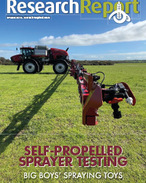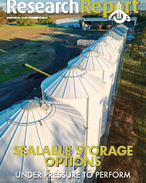This article is 2 years old. Images might not display.
GPA's submission follows previous work to introduce an autonomy Code of Practice for the use of agricultural machinery in Australia.
Led by expert consultant, Dr Rohan Rainbow, the Code of Practice for Agricultural Mobile Field Machinery with Autonomous Functions in Australia is a joint project with GPA, the Tractor and Machinery Association of Australia (TMA) and the Society of Precision Agriculture Australia (SPAA).
The Strategy's discussion paper says in 2021, Australian robotics companies were estimated to be worth $18 billion in annual revenue, up from $12 billion in 2018.
The paper notes that automation, in part enabled by robotics, was forecast in 2019 to add an additional $170 billion to $600 billion to Australia's annual gross domestic product by 2030 given sufficient investment across the private and public sectors.
However, the paper also says: ‘Australia is facing widespread and acute skill shortages' and ‘Continued business innovation and investment in new technology, such as robotics and automation, can help lift productivity growth during a period of historically low unemployment'.
GPA research spokesperson, and Victorian grain producer, Andrew Weidemann, said GPA's submission alerts the National Robotics Strategy to the fact this new technology will deliver much needed efficiency gains for grain producers, along with broader industry and community benefits.
"Australia's grains industry is already seeing reports of early movement in the autonomy space, with smaller autonomous machinery such as SwarmFarm that can spot spray weeds in paddocks during summer," Weidemann said.
"Other growers will be watching intently, to see how this can translate into dollars and cents on their own farms; especially moving towards scaling up to the future use of bigger driverless machinery at seeding and harvesting.
"GPA recognised this technology's impending arrival - that's why we've worked with TMA and SPAA to get ahead of the game."
GPA's submission to the Strategy shows that a recently-released report analysed the global market for Autonomous Farm Equipment and estimated its value at US$77.8 billion in the year 2020 (AUD$114b). This analysis also projected the market to reach US$199.8b (AUD$292b) by 2027.
GPA's Code of Practice was finalised and presented to the Western Australian government in mid-2021. It can be viewed here: https://bit.ly/3Ox6NB8























